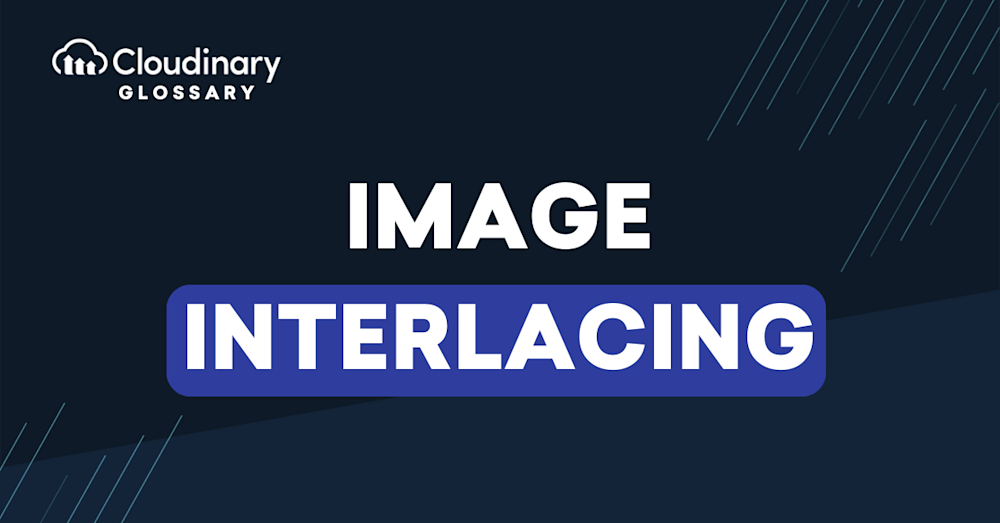What Is Image Interlacing?
Image interlacing is a progressive loading technique that displays an image gradually while downloading. Instead of waiting for the complete image file to load, this technique allows the browser or application to render a lower-quality version quickly and progressively improve its quality as more data is received. This gives users a perception of faster load times and reduces the perception of a blank screen.
Why Is Image Interlacing Important?
Page load times and visual responsiveness are crucial factors that can severely impact user experience and SEO. Image interlacing can significantly enhance the perceived performance of a website or application by providing users with instant feedback that content is being loaded. This helps reduce bounce rates, engages the user’s attention, and encourages them to stay on your site or use your application for longer.
Benefits of Image Interlacing
Now that we’ve explored the concept of image interlacing and how it works, let’s delve into how it impacts the web. Interlacing brings a host of benefits to your digital images, enhancing user experience in ways that are both subtle and significant. Here’s how it makes a difference:
- Improved User Experience – By displaying an initial version of the image, even if it’s of lower quality, image interlacing gives users a sense of progress and responsiveness. This visual feedback significantly improves user experience by minimizing the perceived load time.
- Reduced Bounce Rates – With faster perceived loading times, users are less likely to abandon a page or application due to slow load times. Interlaced images ensure that users are engaged even during loading, reducing bounce rates.
- Enhanced Website Performance – By improving user experience and reducing bounce rates, image interlacing can positively impact website performance metrics, such as increased time-on-site and improved conversion rates.
- Accommodates Slow Internet Connections – Image interlacing benefits users with slower internet connections. By progressively rendering the image, even users with limited bandwidth can view a usable version of the picture early on.
Drawbacks of Image Interlacing
Despite its advantages in rendering images progressively, image interlacing has its share of drawbacks that make it a less-than-ideal solution for certain situations. Below are some key points you should be aware of when considering the use of interlaced images:
- Increased file size: Interlacing can significantly increase the file size compared to non-interlaced images, consuming more bandwidth and leading to longer load times.
- Slower rendering: The process of decoding interlaced images is generally slower, as browsers need to decode and render multiple passes before displaying the whole image.
- Limited format support: Not all image formats support interlaced rendering. For instance, JPEG supports progressive rendering, but it’s not the same as interlacing found in GIF and PNG formats.
- Image degradation: In some cases, interlacing can result in the loss of image quality and sharpness, especially when viewing images at smaller sizes or lower resolutions.
- Compatibility issues: Older browsers and devices may not fully support or be able to display interlaced images correctly, leading to potential display issues.
While image interlacing can be beneficial in certain circumstances, weighing these drawbacks against potential benefits before implementing them in your projects is essential. Always consider the context and specific needs of your target audience when making decisions about image optimization.
Image Formats Supporting Image Interlacing
Several popular image formats support image interlacing, including:
- GIF – GIFs are one of the earliest widely-used image formats that support interlacing. It is commonly used for animations and small, simple graphics.
- PNG – The Portable Network Graphics (PNG) format also supports interlacing. PNG is widely used for web graphics, offering lossless compression and transparency support.
- JPEG (Progressive JPEG) – While not strictly interlacing, JPEG images can be encoded as “progressive” to achieve a similar effect. Progressive JPEGs display increasingly higher levels of detail as they load. This format is commonly used for photographs and complex images.
Conclusion
Image interlacing is a technique that can provide valuable benefits for improving the user experience on the web, particularly for users with slow connections or limited bandwidth. However, it’s important to consider the drawbacks, such as increased file size and compatibility issues, before implementing image interlacing in your projects.
Use Cloudinary, a powerful and user-friendly image and video management solution, to optimize your images while balancing quality and performance. Explore Cloudinary’s extensive documentation and flexible APIs to unlock the full potential of your images and elevate your user experience to new heights.
Sign up for a free trial today and discover how Cloudinary can optimize your images and videos with ease!
Additional Resources You May Find Useful:




